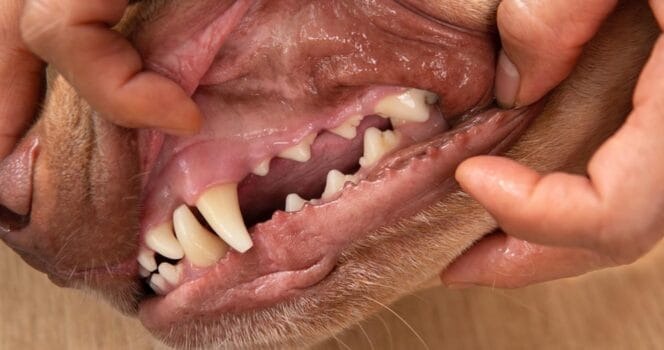Bringing a pet into your home means welcoming a new family member — one who offers companionship, love, and loyalty. Because of that bond, most pet owners work tirelessly to keep their animals healthy and safe. But sometimes, a danger we never even think about can cause heartbreaking consequences.
That was the case for Samantha Carress, whose 2-year-old Golden Retriever, Luna, passed away after ingesting a common household product. Samantha is now sharing her story to help other pet owners understand a little-known but extremely dangerous toxin found in many everyday foods and household items.
Her message has become an eye-opening reminder: even responsible pet owners can overlook hazards that lie hidden in plain sight.

A Family Devastated by an Unexpected Danger
Luna was an energetic, affectionate Golden Retriever who was deeply loved by her family. Like many dog owners, Samantha believed she had safeguarded her home from all the obvious threats. She knew chocolate was toxic. She knew sugary sweets were unhealthy. She made sure harmful foods were out of reach.
But what she didn’t realize was that another ingredient, one not commonly known to be dangerous, posed an even greater threat.
One day, while the family was away, Luna ate something she found inside the home: a pack of sugar-free Ice Breakers lemon-flavored gum.
The gum contained Xylitol, a sugar substitute widely used in “sugar-free” products. And for dogs, even a small amount can be deadly.
What Happened to Luna
When Samantha returned home, Luna already showed signs that something was wrong. The effects came quickly and grew increasingly severe. Xylitol can trigger a sudden and dangerous drop in blood sugar (hypoglycemia), and in higher amounts, it can cause acute liver failure.
Luna’s condition deteriorated rapidly. Despite the family taking her to an emergency veterinarian immediately and paying for intensive treatment totaling around $20,000, the prognosis was grim. The attending vet estimated only a 25% chance of survival, even with advanced care.
Faced with the reality that Luna was suffering and unlikely to recover, the family made the heartbreaking decision to let her go peacefully.
Her death was devastating — made worse by the knowledge that it could have been prevented if the danger had been known ahead of time.

A Warning to All Pet Owners
Driven by grief but determined to help others, Samantha began speaking publicly about Luna’s story. She hopes her experience will raise awareness about Xylitol and encourage dog owners to check their homes more carefully.
Many people are aware of chocolate toxicity, yet far fewer know about the threat of Xylitol, despite veterinary organizations repeatedly warning the public. According to data from the Pet Poison Helpline, reports of Xylitol poisoning in dogs have increased dramatically in the past decade — by an estimated 3,000%.
Samantha never expected a simple pack of gum to cost her dog’s life. And that’s exactly why the danger is so serious: Xylitol poisoning often catches people by surprise.
What Is Xylitol and Why Is It Dangerous to Dogs?
Xylitol is a low-calorie sugar alternative used in many sugar-free, keto-friendly, or diabetic-friendly products. It is considered safe for human consumption, but can be extremely toxic to dogs.
How Xylitol Harms Dogs
According to veterinary toxicologists and organizations like the ASPCA Animal Poison Control Center:
1. Causes a rapid drop in blood sugar
Even a small amount can trigger a sudden release of insulin, causing life-threatening hypoglycemia within minutes to hours.
2. Can lead to acute liver failure
In larger doses, Xylitol can damage liver cells, potentially resulting in hemorrhage, seizures, or death.
3. Symptoms appear quickly
Dogs may show signs such as:
-
Vomiting
-
Weakness
-
Stumbling or collapse
-
Tremors or seizures
-
Lethargy
-
Jaundice (if liver damage occurs)
Because the onset can be rapid, immediate treatment is critical. Even a delay of 30–60 minutes can affect survival rates.

Common Household Items That May Contain Xylitol
Xylitol appears in a surprisingly wide variety of foods and products, including some that dog owners often don’t suspect.
Sugar-free products
-
Chewing gum
-
Mints
-
Breath strips
-
Candy
-
Drink mixes
Baked goods and pantry items
-
Sugar-free cookies or cakes
-
Some peanut butters and nut butters
-
Low-sugar or keto baking mixes
Condiments
-
Certain ketchup brands
-
BBQ sauces
-
Salad dressings
Personal care items
(Dogs sometimes ingest these accidentally.)
-
Mouthwash
-
Toothpaste
-
Medications
-
Nasal sprays
Because Xylitol can appear under different names and in different concentrations, it’s essential for pet owners to read ingredient labels carefully.

Why Many Pet Owners Are Still Unaware
Despite several veterinary associations raising alarms over the past decade, awareness of Xylitol risks remains limited.
Several factors contribute:
1. Xylitol is safe for humans
People assume foods that are safe for them are safe for their pets as well.
2. It’s not treated like other poisons
Most households securely store chocolate or chemical products, but items like gum or peanut butter are often left in purses, backpacks, or on countertops.
3. The symptoms escalate quickly
By the time owners recognize something is wrong, the window for successful intervention may be short.
Samantha, like many others, was knowledgeable about common dangers to dogs — but not this one.
How to Protect Your Dog from Xylitol Poisoning
As Samantha’s story shows, even a responsible, loving pet owner can unintentionally overlook hidden hazards. Here are steps to prevent accidental ingestion:
1. Check labels carefully
Especially on:
-
Gum
-
Peanut butter
-
Baked goods
-
Nutritional products
2. Keep purses, backpacks, and drawers closed
Many dogs find gum or candy inside bags.
3. Store all sugar-free products out of reach
Just like you would with chocolate or medication.
4. Choose pet-safe peanut butter
Some brands are clearly labeled “No Xylitol.”
5. Be aware of personal products
Toothpaste, mouthwash, and nasal sprays should always be stored safely.
6. Contact a veterinarian immediately if ingestion is suspected
Time is critical. Even if you are unsure, it’s better to seek professional help quickly.

Turning Tragedy Into Awareness
Samantha’s experience is painful, but her willingness to speak out is helping others recognize a danger they may never have known about. Her message is simple but powerful:
Check your home. Read ingredient lists. Don’t assume something harmless to you is harmless to your dog.
By sharing Luna’s story, Samantha hopes to prevent similar heartbreak for other families.
A Final Message of Love and Caution
Luna’s passing serves as a solemn reminder that our pets depend on us for their safety. Hidden dangers like Xylitol can exist in everyday products, and awareness is one of the best tools we have to prevent accidental poisoning.
If you have pets at home, consider taking a moment today to:
-
Review the items in your pantry
-
Check your purse or backpack
-
Secure personal care products
-
Read ingredient labels carefully
A few minutes of precaution can save a life.
Samantha’s story shows how easily tragedy can occur — but also how much can be done to prevent it. By spreading awareness, pet owners can help ensure their dogs stay safe, healthy, and protected from hidden household hazards.
